Subpolar Climate: [Characteristics, Flora, Fauna and Adaptability]
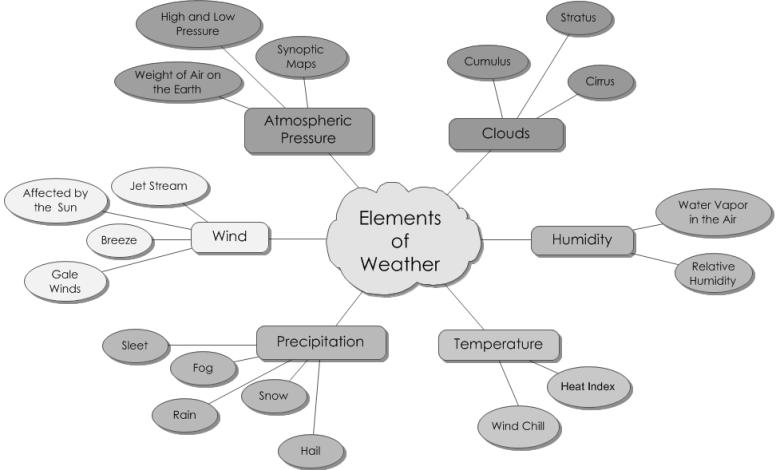
Important points about the subpolar climate:
- What is? The subpolar climate is one that develops in the subpolar latitudes that are in the middle ranges of the planet.
- Where it is located? It is present in latitudes that cover from 50º to 70º, but mostly in the northern hemisphere.
- What flora predominates? There is flora in the subpolar climate, characterized by the presence of taigas. Within the possible species we find the conifers.
- What fauna predominates? Representative fauna of the subpolar climate is composed of moose, weasels, brown bears, squirrels, owls, wolves, among other species.
- How long is the day and night? Winters can have nights lasting more than 15 hours, the same thing happening but with the day in the summer.
- Can human beings live in this climate? The quantities of populations that inhabit the subpolar climate are not particularly large, but they do exist.
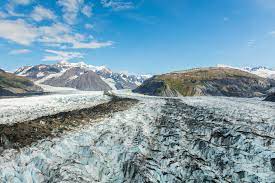 The subpolar climate is a climatic variation that prevails within the areas with medium altitudes of the planet.
The subpolar climate is a climatic variation that prevails within the areas with medium altitudes of the planet.
It has a wide climatic range that is distributed throughout the year, requiring summers to be above 10º C to belong to this climatic family.
It could be classified as a cold climate because it develops with low temperatures most of the year, but there is a presence of flora and fauna. What other things could we say about this climate that you find interesting? You will have to discover them by joining us in the following lines.
What is subpolar climate?
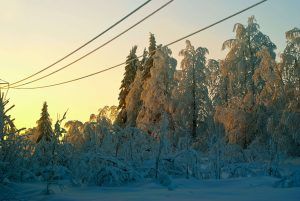 The subpolar climate is one that develops in the subpolar latitudes that are in the middle ranges of the planet.
The subpolar climate is one that develops in the subpolar latitudes that are in the middle ranges of the planet.
Its summer seasons are short, lasting a maximum of three months, although there could be a minimum of one month.
However, winters are extensive, occupying most of the year (from 9 to 11 months). This climate belongs to the continental climate family, since it is distributed mainly in the center of the continents.
Where is the subpolar climate located?
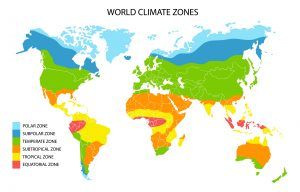 It is present in the latitudes that cover from 50º to 70º, but mostly in the northern hemisphere.
It is present in the latitudes that cover from 50º to 70º, but mostly in the northern hemisphere.
This encompasses continents like America where one of the places to see it is in Alaska, as well as Europe and Asia.
Although it is possible that it occurs in certain areas of the southern hemisphere, a series of conditions must be met and only in mountainous areas. The areas that have been recorded with this climate are Puerto Williams in Chile and the Valle de los Patos Superior in Argentina.
What characteristics does the subpolar climate have?
To consider that a geographical area really has a subpolar climate, it needs to have the following characteristics:
- Temperatures: climatic variation is complex, occupying a wide range around what summer and winter imply. In the first case, it can be quite hot, exceeding 30º C. In the second, it can drop a lot, reaching -40º C.
- Precipitations: they are reduced, both in frequency and in amount of liquid. In some cases they do not fall in liquid form but as snow, creating layers of ice that remain on the ground creating a white and frozen environment.
- Types: Although it appears to be a microclimate, the subpolar climate actually has a series of variations that allow it to be divided into the following types: oceanic subpolar climate, extreme subpolar climate, monsoonal subpolar climate, humid subpolar climate, and Mediterranean subpolar climate.
- Air masses: it is a climate that is influenced by the arrival of arctic and antarctic air masses during winters. However, in summer, these are softer, settling in function of the winds that come from the western sea.
- Humidity: it is a humid climate that maintains this condition both in winter and in summer.
What flora predominates in the subpolar climate?
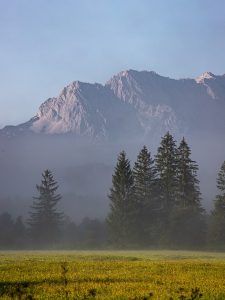 There is flora in the subpolar climate, characterized above all by the presence of taigas.
There is flora in the subpolar climate, characterized above all by the presence of taigas.
The reason is that the species must have a high resistance to withstand such cold winters and cope with the short space of warm time that summer offers.
Among the possible species we find conifers that, having small leaves, are capable of resisting these extreme conditions.
Cultivation is a somewhat unlikely subject to carry out because the cold temperatures of winter promote some episodes of freezing. Therefore, the soil does not have enough nutrients for plants to grow.
Also, during the winter these ice caps tend to melt, causing a muddy structure to form. Some areas offer the ideal conditions for very specific crops, such as strawberries or potatoes, to prosper.
However, the good treatment of crops is not usually very characteristic of the subpolar climate.
What fauna predominates in the subpolar climate?
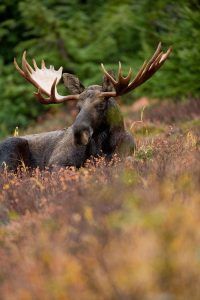 Despite the climatic conditions, the fauna of the subpolar climate is usually relatively varied compared to other cold climates.
Despite the climatic conditions, the fauna of the subpolar climate is usually relatively varied compared to other cold climates.
This is because the species are capable of adapting to what winter demands of them and, being within the continents, they can move.
The demonstrations take place during the winter, especially on those days when temperatures tend to drop more.
Representative fauna of the subpolar climate is composed of moose, weasels, brown bears, squirrels, owls, wolves, etc. If the area with a subpolar climate has a water source, it is common for there to be a rich marine life, composed mainly of fish and some other species.
How long is the day and night in the subpolar climate?
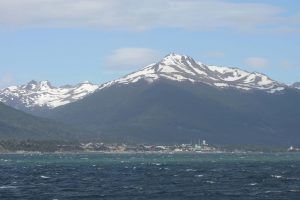 The movement of terrestrial translation has a definitive impact on the duration of the day and night on the entire planet.
The movement of terrestrial translation has a definitive impact on the duration of the day and night on the entire planet.
The subpolar climate, being so close to the poles, receives the impact of the sun’s rays obliquely.
This condition significantly modifies the duration of the nights in winter, which can be extensive in number of hours.In fact, winters can have nights that last more than 15 hours, the same thing happening but with the day in the summer.
Can humans live in the subpolar climate?
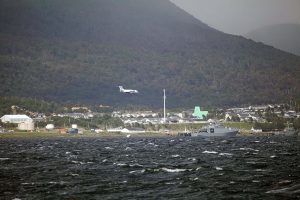 The quantities of populations that inhabit the subpolar climate are not particularly large, but they do exist.
The quantities of populations that inhabit the subpolar climate are not particularly large, but they do exist.
The northern part of Canada, for example, has a subpolar climate and one of its federal entities, known as Nunavut, has more than 36,000 inhabitants.
Although they are not very fertile areas for planting (in addition to the temperatures that are complex), hunting and fishing are usually allowed.
The subpolar climate is well defined in the world and occupies much more territory than we can imagine (for example, a large part of Siberia is subpolar).
As it is not represented by extreme cold temperatures, it becomes interesting for population groups to decide to settle and exploit the resources. In addition, they are usually ideal for working on tourism, since the snow and the exploration routes attract a lot of attention from outsiders.
Bibliographic references
- Space-time dynamics of the relationship between climate and ecosystem functioning in Northern Patagonia, E Bianchi – 2017 – ri.conicet.gov.ar
- Is the Mediterranean climate subject to cycles? Energetic interactions between North Atlantic temperature and Mediterranean cyclogenesis, JQ Sala, EM Chiva, VQ VÁZQUEZ – Climate, society, risks and…, 2015 – core.ac.uk
- Climatic and oceanographic variability in the subpolar North Atlantic during the Pleistocene (1,050,000-403,000 years), M Martínez Sánchez – 2017 – gredos.usal.es
- Water masses and transport of physical and chemical properties in the North Atlantic Subpolar Gyre, MÁ Rodríguez – 2002 – dialnet.unirioja.es
- Water transfer from the subtropical gyre to the subpolar gyre of the North Atlantic: the Gulf Stream and its extension, WR Andry – 2002 – dialnet.unirioja.es
- Comparison of two glaciers: Longyearbreen (Spitsbergen) and Monte Perdido (Pyrenees). Characteristics and evolution since the Little Ice Age, RM Moreno – Ería, 2004 – reunited.uniovi.es
- Subglacial drainage prediction method, its perspectives in the subpolar glaciers of Antarctica, A Eraso – II Spanish Symposium of Antarctic Studies, 1987 – books.google.com
Maybe you are also interested in:
- Koppen climate classification: [Concept, Characteristics and Types of Climates]
- Alpine Climate: [Characteristics, Flora, Fauna and Adaptability]
- Arid Climate: [Characteristics, Flora, Fauna and Adaptability]
- Temperate Continental Climate: [Characteristics, Flora, Fauna and Adaptability]
- Continental Climate: [Characteristics, Flora, Fauna and Adaptability]
- High Mountain Climate: [Characteristics, Flora, Fauna and Adaptability]
- Climate of Argentina: [Characteristics, Flora, Fauna and Adaptability]
- Australia Climate: [Characteristics, Flora, Fauna and Adaptability]
- California Climate: [Characteristics, Flora, Fauna and Adaptability]
- Climate of Europe: [Characteristics, Flora, Fauna and Adaptability]
- Tundra Climate: [Characteristics, Flora, Fauna and Adaptability]
- Equatorial Climate: [Characteristics, Flora, Fauna and Adaptability]
- Cold Climate: [Characteristics, Flora, Fauna and Adaptability]
- Cold Weather: [Characteristics, Flora, Fauna and Adaptability]
- Mediterranean Climate: [Characteristics, Flora, Fauna and Adaptability]
- Ocean Climate: [Characteristics, Flora, Fauna and Adaptability]
- Polar Climate: [Characteristics, Flora, Fauna and Adaptability]
- Subtropical Climate: [Characteristics, Flora, Fauna and Adaptability]
- Subhumid Temperate Climate: [Characteristics, Flora, Fauna and Adaptability]
- Temperate Climate: [Characteristics, Flora, Fauna and Adaptability]
- Humid Tropical Climate: [Characteristics, Flora, Fauna and Adaptability]
- Dry Tropical Climate: [Characteristics, Flora, Fauna and Adaptability]

![Photo of Gardenia Care: [Earth, Strengthening, Humidity and Pruning]](https://www.complete-gardening.com/wp-content/uploads/2022/08/gardenia-care-earth-strengthening-humidity-and-pruning-390x220.jpg)

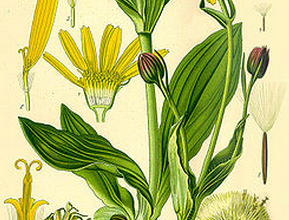
![Photo of How to Stake Tomatoes: [Utility, Installation and Procedure]](https://www.complete-gardening.com/wp-content/uploads/2022/08/how-to-stake-tomatoes-utility-installation-and-procedure-390x220.jpg)